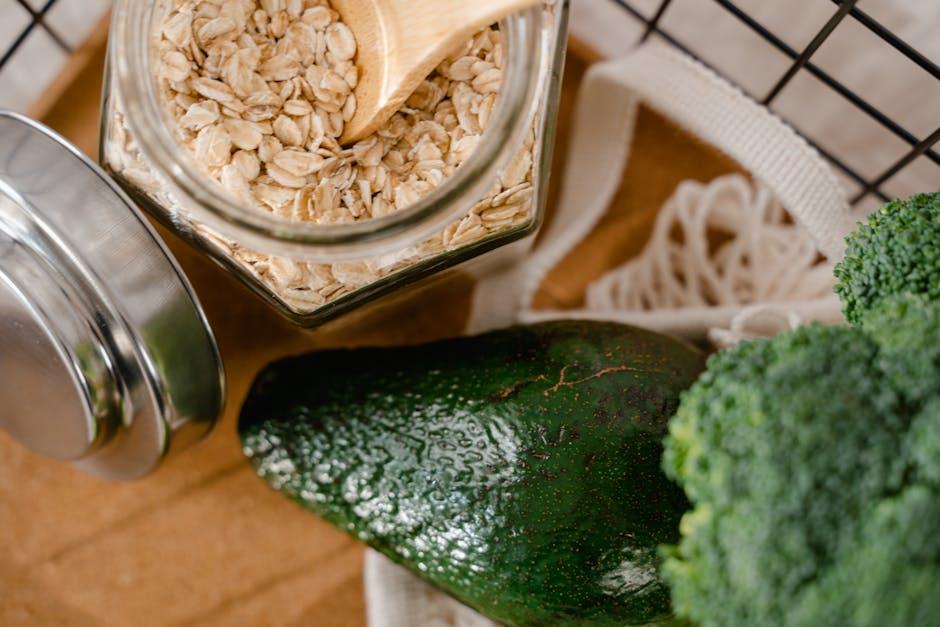In the ever-evolving world of fitness and nutrition, high-protein diets have surged to the forefront, hailed by enthusiasts and experts alike as a key to building muscle, shedding fat, and enhancing overall performance. Yet, as with any trend that garners rapid popularity, it begs a deeper exploration beyond the initial allure. Are high-protein diets truly sustainable for long-term fitness, or do they shine brightly only to fade under the weight of practicality and balance? This article delves into the science, the success stories, and the skepticism surrounding high-protein diets, offering a comprehensive look at their role in the pursuit of enduring health and vitality. Whether you’re a seasoned athlete, a weekend warrior, or someone just beginning their fitness journey, understanding the sustainability of this dietary approach could be the key to unlocking your long-term goals. Join us as we unravel the complexities and truths of high-protein living in the quest for lasting fitness.
Balancing Muscle Gains with Nutritional Needs
Achieving muscle gains while meeting nutritional requirements is a delicate dance that demands more than just an increase in protein intake. It’s essential to consider the quality and variety of the protein sources, ensuring they align with overall dietary needs. While high-protein diets can support muscle growth, it’s crucial to balance them with carbohydrates and fats to fuel workouts and support recovery. An imbalance might lead to nutrient deficiencies, impacting long-term health and performance.
- Diverse Protein Sources: Incorporate a mix of plant-based and animal-based proteins to ensure a wide range of nutrients.
- Carbohydrate Inclusion: Don’t underestimate the power of carbs for energy, especially for high-intensity training sessions.
- Fat for Hormonal Balance: Healthy fats are essential for hormone production, which plays a role in muscle growth and repair.
Monitoring portion sizes and understanding the body’s changing needs can help maintain a sustainable dietary approach. This not only supports muscle gains but also promotes overall wellness, ensuring fitness goals are met without compromising health.

The Environmental Footprint of Protein-Rich Diets
Adopting a protein-rich diet is a popular choice for those pursuing long-term fitness goals. However, the environmental implications of these diets warrant consideration. The production of protein sources, particularly animal-based ones, often requires substantial resources, leading to significant ecological impacts. Livestock farming, for instance, is associated with high levels of greenhouse gas emissions, extensive land use, and water consumption. These factors contribute to deforestation and biodiversity loss, presenting a challenge for those striving for a sustainable lifestyle.
On the other hand, plant-based proteins offer a more environmentally friendly alternative, yet they still demand careful sourcing and consumption practices. Consider incorporating these strategies to mitigate environmental impact:
- Opt for locally sourced and seasonal produce to reduce transportation emissions.
- Embrace a diverse range of protein sources to alleviate pressure on any single resource.
- Support sustainable farming practices that prioritize soil health and water conservation.
By being mindful of the environmental footprint of our dietary choices, we can better align our fitness objectives with a commitment to preserving the planet.

Long-Term Health Implications of High Protein Intake
As fitness enthusiasts increasingly gravitate towards high-protein diets, it’s crucial to consider the potential long-term health consequences. While protein is essential for muscle repair and growth, excessive intake can strain the kidneys, particularly in individuals with pre-existing kidney conditions. Over time, a consistently high-protein diet might also lead to nutrient imbalances, as individuals may inadvertently consume fewer carbohydrates and fats, which are vital for a well-rounded diet.
Moreover, diets rich in animal proteins often bring along higher levels of saturated fats and cholesterol, potentially increasing the risk of cardiovascular issues. It’s important to recognize that not all proteins are created equal. Incorporating a variety of protein sources can mitigate some risks associated with high-protein consumption. Consider the following protein sources to diversify your intake:
- Plant-based proteins: Beans, lentils, and quinoa offer high-quality protein with the added benefits of fiber and essential nutrients.
- Lean meats: Options like chicken and turkey provide protein without excessive saturated fats.
- Fish: Rich in omega-3 fatty acids, fish like salmon and mackerel support heart health.
Balancing protein intake with other macronutrients, alongside regular monitoring of health markers, can help ensure that a high-protein diet remains beneficial in the long run.

Crafting a Sustainable High-Protein Meal Plan
Designing a high-protein meal plan that is both sustainable and nourishing requires a balance between variety and nutrient density. Begin by integrating diverse protein sources into your diet to ensure you’re not only meeting your protein needs but also supporting overall health. Consider plant-based proteins such as lentils, chickpeas, and quinoa, which offer fiber and essential vitamins. Lean meats, poultry, and fish can be included in moderation, focusing on sustainable sourcing to minimize environmental impact.
- Choose local and seasonal produce: Opt for vegetables and grains that are in season and grown locally to reduce your carbon footprint.
- Balance macronutrients: Pair your proteins with healthy fats and complex carbohydrates to create well-rounded meals that provide sustained energy.
- Embrace variety: Rotate different protein sources throughout the week to keep meals exciting and nutritionally complete.
By thoughtfully selecting ingredients and prioritizing diversity in your meal planning, you can craft a high-protein diet that not only supports long-term fitness goals but also aligns with sustainable living principles. Incorporating these practices fosters a holistic approach to nutrition that benefits both personal health and the planet.
To Wrap It Up
In the grand tapestry of nutrition and fitness, the role of high-protein diets is a vibrant thread that continues to weave its way through the fabric of health discussions. As we stand at the crossroads of dietary choices, it’s clear that while high-protein diets offer promising benefits, their long-term sustainability remains a nuanced debate. The path to enduring fitness is rarely a one-size-fits-all journey; it is a mosaic of individual needs, lifestyle choices, and evolving goals. Whether you embrace the high-protein lifestyle or seek a more balanced approach, the key lies in understanding your body’s unique rhythm and nourishing it accordingly. As the conversation around nutrition evolves, let us remain curious, informed, and open to the possibilities that lie ahead on the road to lasting health and vitality.
